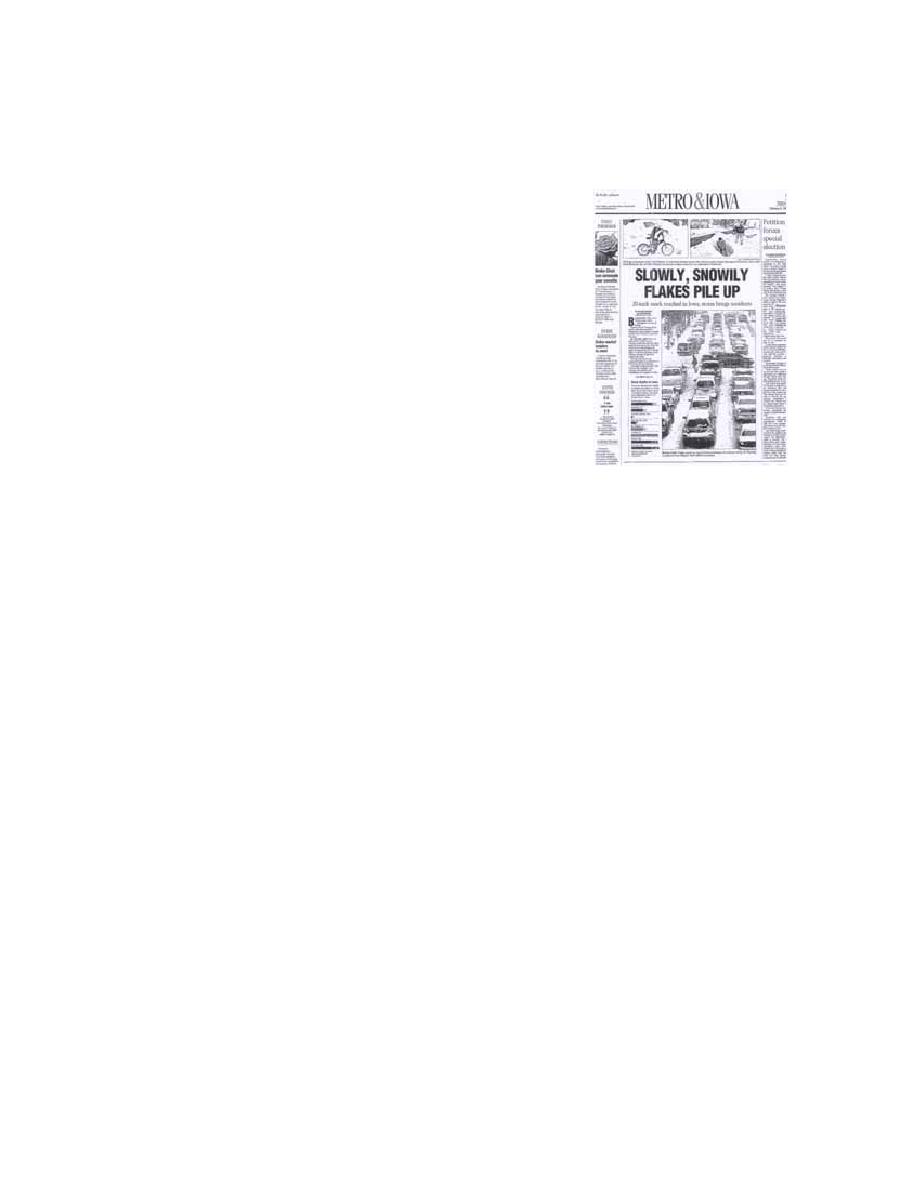
10 SELECTED CASE STUDIES
While bulk statistics are useful in the assessment of the
quality of RWFS forecasts, it is quite valuable to first
examine their quality for a variety of weather events. Such
case studies reveal the reasons behind forecast errors and the
scale of errors that it is reasonable to expect under the
circumstances most important to users when the roads are
being impacted by winter weather.
The case studies include the following events:
Cold Rain Case
16 January 2004
Light Snow Case
26 January 2004
Blowing Snow Case
9 February 2004
Mixed Precip Case
20 February 2004
Heavy Snow Case
15 March 2004
Bulk statistical analysis will follow the case studies, since such proper context will then
be in place. Using information from the case studies and the entire program, the
performance of several MDSS modules (road treatments, road temperatures, mesoscale
models) is discussed, including the quality of some verification datasets. Several case
studies were chosen for analysis. The cases were chosen to include several weather and
treatment scenarios which occurred during this year's demonstration.
10.1 Verification Methods
For the demonstration this year a suite of weather sensors (Fig. 10.1) were also installed
at the DOT garage in Ames for additional observations and verification tools. Sensors at
this site included temperature, humidity, propeller-driven anemometer, pyranometer,
sonic sensor to measure snow depth on the snow board, and GEONOR snow gauge to
measure snowfall. A higher confidence is placed in the accuracy from the Geonor, with
its correction for wind speed, for snow depth then from the hourly QPF measurements
made at the METAR site. These sensors became operational on February 9.
23



 Previous Page
Previous Page
